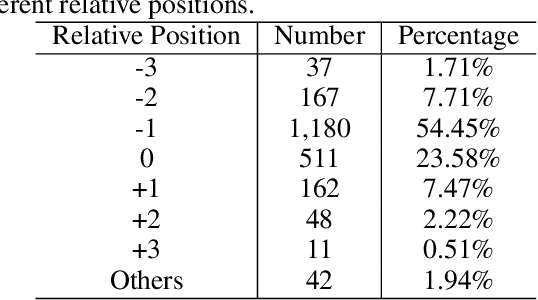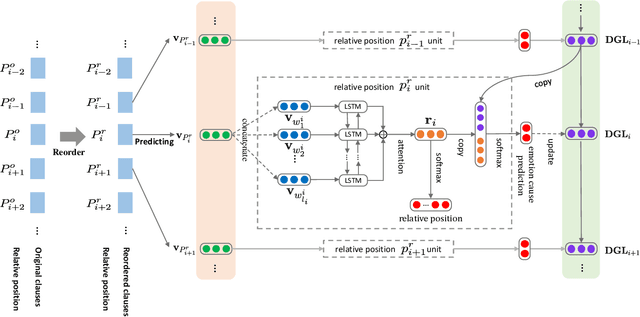Huihui He
From Independent Prediction to Re-ordered Prediction: Integrating Relative Position and Global Label Information to Emotion Cause Identification
Jun 04, 2019



Abstract:Emotion cause identification aims at identifying the potential causes that lead to a certain emotion expression in text. Several techniques including rule based methods and traditional machine learning methods have been proposed to address this problem based on manually designed rules and features. More recently, some deep learning methods have also been applied to this task, with the attempt to automatically capture the causal relationship of emotion and its causes embodied in the text. In this work, we find that in addition to the content of the text, there are another two kinds of information, namely relative position and global labels, that are also very important for emotion cause identification. To integrate such information, we propose a model based on the neural network architecture to encode the three elements ($i.e.$, text content, relative position and global label), in an unified and end-to-end fashion. We introduce a relative position augmented embedding learning algorithm, and transform the task from an independent prediction problem to a reordered prediction problem, where the dynamic global label information is incorporated. Experimental results on a benchmark emotion cause dataset show that our model achieves new state-of-the-art performance and performs significantly better than a number of competitive baselines. Further analysis shows the effectiveness of the relative position augmented embedding learning algorithm and the reordered prediction mechanism with dynamic global labels.
Joint Binary Neural Network for Multi-label Learning with Applications to Emotion Classification
Feb 03, 2018



Abstract:Recently the deep learning techniques have achieved success in multi-label classification due to its automatic representation learning ability and the end-to-end learning framework. Existing deep neural networks in multi-label classification can be divided into two kinds: binary relevance neural network (BRNN) and threshold dependent neural network (TDNN). However, the former needs to train a set of isolate binary networks which ignore dependencies between labels and have heavy computational load, while the latter needs an additional threshold function mechanism to transform the multi-class probabilities to multi-label outputs. In this paper, we propose a joint binary neural network (JBNN), to address these shortcomings. In JBNN, the representation of the text is fed to a set of logistic functions instead of a softmax function, and the multiple binary classifications are carried out synchronously in one neural network framework. Moreover, the relations between labels are captured via training on a joint binary cross entropy (JBCE) loss. To better meet multi-label emotion classification, we further proposed to incorporate the prior label relations into the JBCE loss. The experimental results on the benchmark dataset show that our model performs significantly better than the state-of-the-art multi-label emotion classification methods, in both classification performance and computational efficiency.
 Add to Chrome
Add to Chrome Add to Firefox
Add to Firefox Add to Edge
Add to Edge